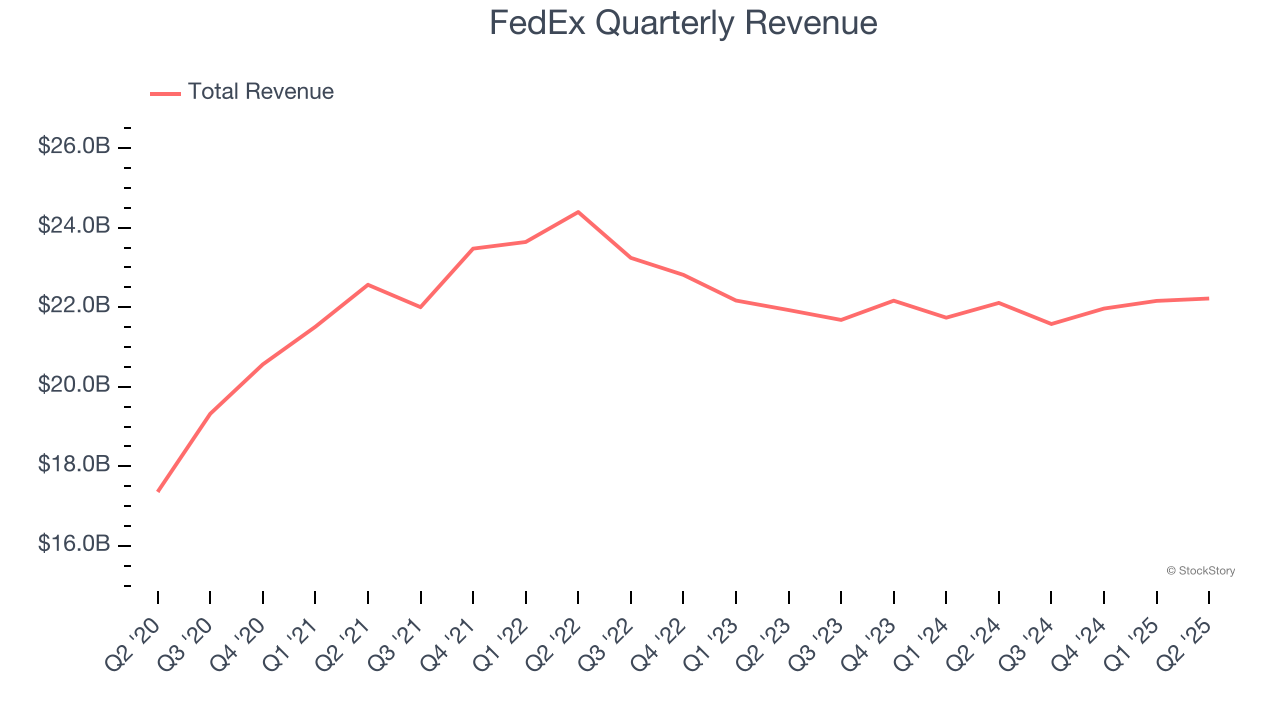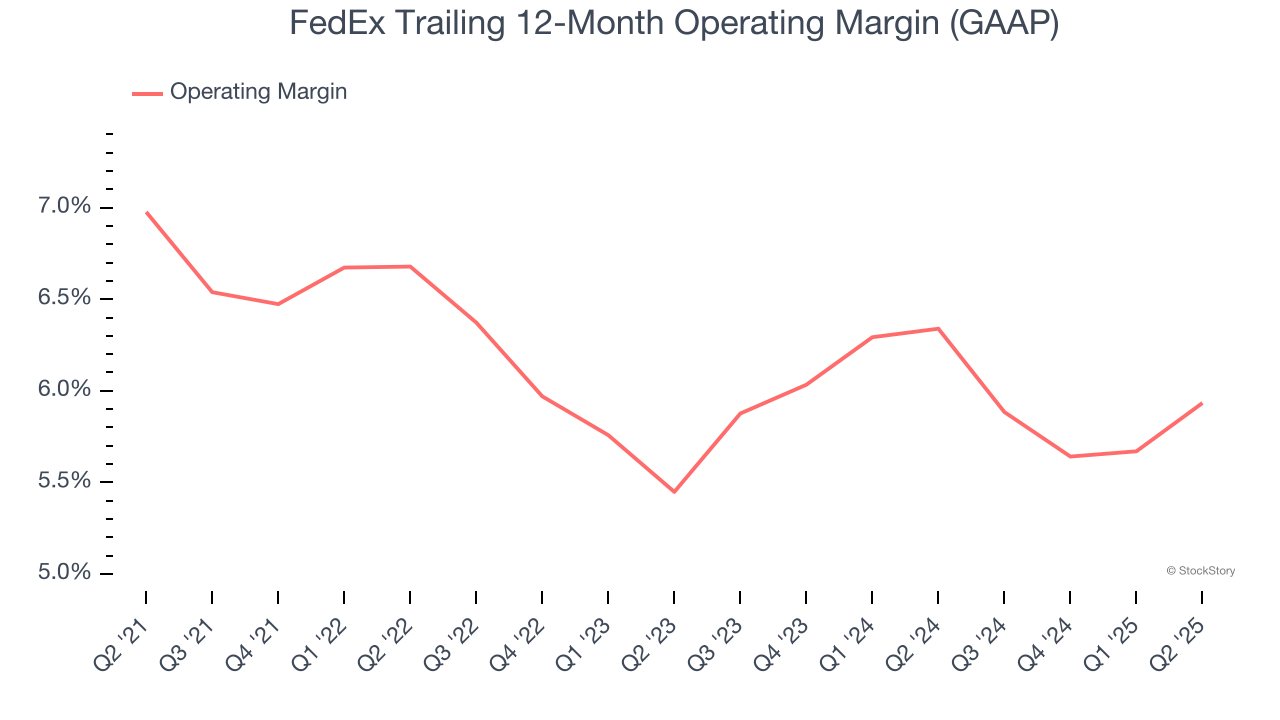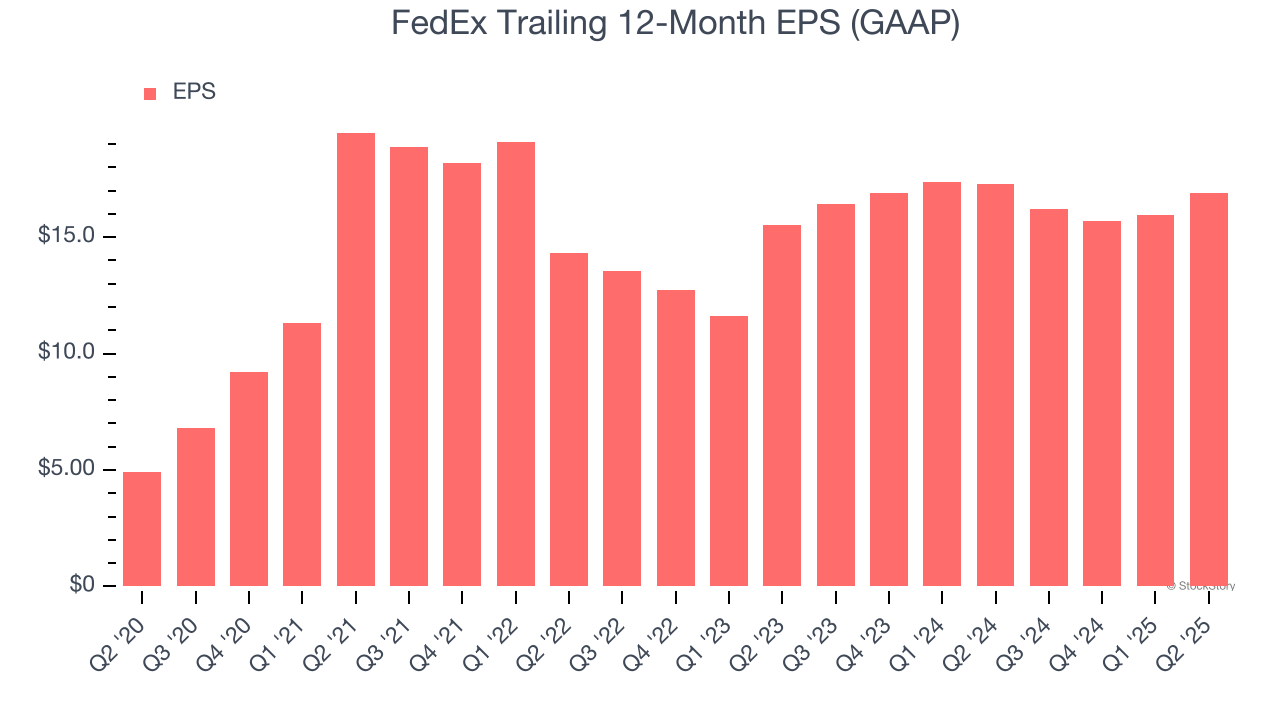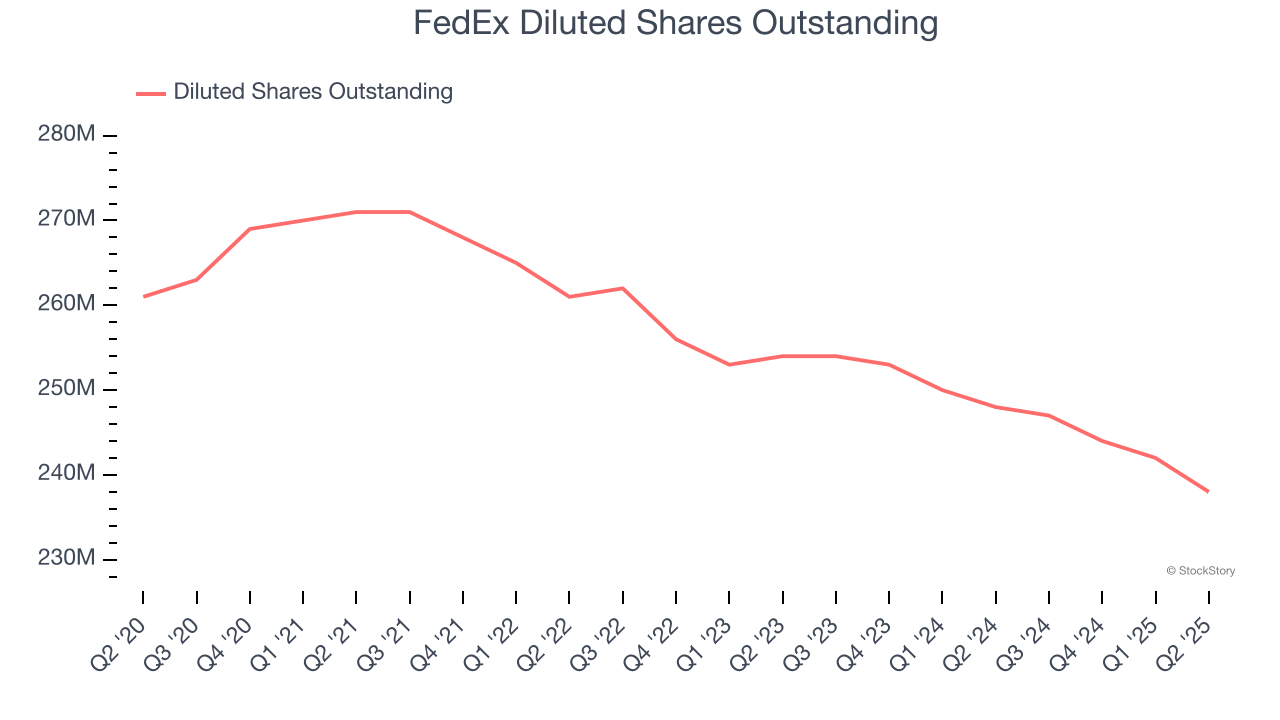
Parcel and cargo delivery company FedEx (NYSE: FDX) reported revenue ahead of Wall Street’s expectations in Q2 CY2025, but sales were flat year on year at $22.22 billion. Guidance for next quarter’s revenue was better than expected at $21.79 billion at the midpoint, 0.9% above analysts’ estimates. Its GAAP profit of $6.88 per share increased from $5.94 in the same quarter last year.
Is now the time to buy FedEx? Find out by accessing our full research report, it’s free.
FedEx (FDX) Q2 CY2025 Highlights:
- Revenue: $22.22 billion vs analyst estimates of $21.81 billion (flat year on year, 1.9% beat)
- Revenue Guidance for Q3 CY2025 is $21.79 billion at the midpoint, above analyst estimates of $21.6 billion
- Adjusted EBITDA Margin: 12.8%, in line with the same quarter last year
- Free Cash Flow Margin: 31.7%, up from 5.6% in the same quarter last year
- Market Capitalization: $54.92 billion
Company Overview
Sporting one of the largest air cargo fleets in the world, FedEx (NYSE: FDX) is a global provider of parcel and cargo delivery services.
Revenue Growth
A company’s long-term sales performance can indicate its overall quality. Any business can put up a good quarter or two, but many enduring ones grow for years. Over the last five years, FedEx grew its sales at a tepid 4.9% compounded annual growth rate. This was below our standard for the industrials sector and is a rough starting point for our analysis.

We at StockStory place the most emphasis on long-term growth, but within industrials, a half-decade historical view may miss cycles, industry trends, or a company capitalizing on catalysts such as a new contract win or a successful product line. FedEx’s performance shows it grew in the past but relinquished its gains over the last two years, as its revenue fell by 1.2% annually. FedEx isn’t alone in its struggles as the Air Freight and Logistics industry experienced a cyclical downturn, with many similar businesses observing lower sales at this time. 
This quarter, FedEx’s $22.22 billion of revenue was flat year on year but beat Wall Street’s estimates by 1.9%. Company management is currently guiding for a 1% year-on-year increase in sales next quarter.
Looking further ahead, sell-side analysts expect revenue to grow 1.4% over the next 12 months. While this projection implies its newer products and services will catalyze better top-line performance, it is still below average for the sector.
Today’s young investors won’t have read the timeless lessons in Gorilla Game: Picking Winners In High Technology because it was written more than 20 years ago when Microsoft and Apple were first establishing their supremacy. But if we apply the same principles, then enterprise software stocks leveraging their own generative AI capabilities may well be the Gorillas of the future. So, in that spirit, we are excited to present our Special Free Report on a profitable, fast-growing enterprise software stock that is already riding the automation wave and looking to catch the generative AI next.
Operating Margin
FedEx was profitable over the last five years but held back by its large cost base. Its average operating margin of 6.3% was weak for an industrials business. This result isn’t too surprising given its low gross margin as a starting point.
Analyzing the trend in its profitability, FedEx’s operating margin decreased by 1 percentage points over the last five years. This raises questions about the company’s expense base because its revenue growth should have given it leverage on its fixed costs, resulting in better economies of scale and profitability. We’ve noticed many Air Freight and Logistics companies also saw their margins fall (along with revenue, as mentioned above) because the cycle turned in the wrong direction, but FedEx’s performance was poor no matter how you look at it. It shows that costs were rising and it couldn’t pass them onto its customers.

In Q2, FedEx generated an operating margin profit margin of 8.1%, up 1 percentage points year on year. The increase was encouraging, and because its gross margin actually decreased, we can assume it was more efficient because its operating expenses like marketing, R&D, and administrative overhead grew slower than its revenue.
Earnings Per Share
Revenue trends explain a company’s historical growth, but the long-term change in earnings per share (EPS) points to the profitability of that growth – for example, a company could inflate its sales through excessive spending on advertising and promotions.
FedEx’s EPS grew at an astounding 28.1% compounded annual growth rate over the last five years, higher than its 4.9% annualized revenue growth. However, this alone doesn’t tell us much about its business quality because its operating margin didn’t improve.

We can take a deeper look into FedEx’s earnings quality to better understand the drivers of its performance. A five-year view shows that FedEx has repurchased its stock, shrinking its share count by 8.8%. This tells us its EPS outperformed its revenue not because of increased operational efficiency but financial engineering, as buybacks boost per share earnings. 
Like with revenue, we analyze EPS over a shorter period to see if we are missing a change in the business.
For FedEx, its two-year annual EPS growth of 4.3% was lower than its five-year trend. We hope its growth can accelerate in the future.
In Q2, FedEx reported EPS at $6.88, up from $5.94 in the same quarter last year. We also like to analyze expected EPS growth based on Wall Street analysts’ consensus projections, but there is insufficient data.
Key Takeaways from FedEx’s Q2 Results
We enjoyed seeing FedEx beat analysts’ revenue expectations this quarter. We were also glad its revenue guidance for next quarter slightly exceeded Wall Street’s estimates. Overall, we think this was a decent quarter with some key metrics above expectations. Investors were likely hoping for more, and shares traded down 5% to $217.65 immediately following the results.
So do we think FedEx is an attractive buy at the current price? We think that the latest quarter is only one piece of the longer-term business quality puzzle. Quality, when combined with valuation, can help determine if the stock is a buy. We cover that in our actionable full research report which you can read here, it’s free.
